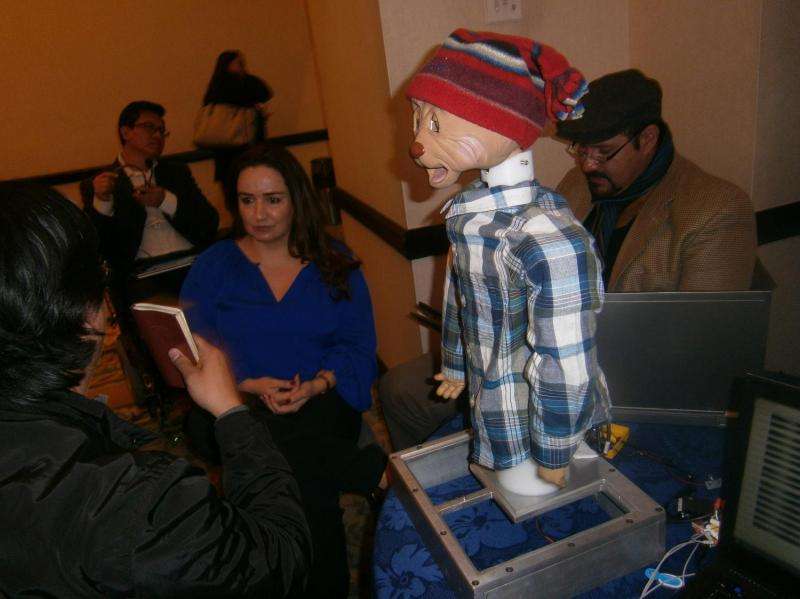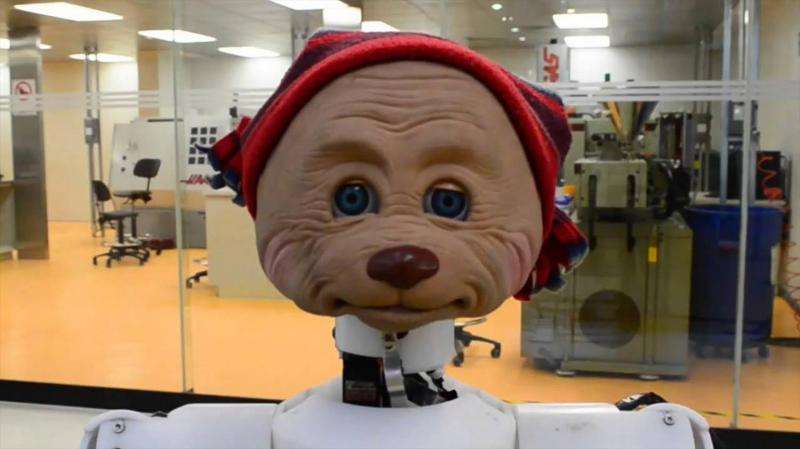Humanoid robot works in therapy for children with autism

Children with autism have special difficulty in expressing emotions, usually have no social skills and face major problems when communicating. In order to help children with this problem learn to recognize facial expressions, a group of researchers at the Tec de Monterrey in Mexico have created a robot using artificial intelligence.
TecO is a humanoid robot that detects neural signals thanks to an operational amplifier using a headset or a hood, which has electrodes mounted on the child's head to record signals; these are sent to a computer that translates them into information that is interpreted by a psychologist or a neurologist.
The operation of TecO is explained by David Silva Balderas, researcher in the area of graduate programs in engineering sciences, at the Mexico City campus of the Tec de Monterrey: "It detects certain intentions, such as moving an arm, or whether the kid is sleepy or alert, but doesn't read thoughts; the expression must be made clear. If the robot registers sadness in the child, it then modifies its mode of action to change that feeling," says the specialist artificial intelligence.
Another member of the scientific team that created TecO is the psychologist Demi Grammatikou, who explains that children with autism are stressed by human behavior, which them anxiety because it is unpredictable, whereas a robot can be made predictable. "What we have seen is that the technology caught their attention and using technological tools lowers their anxiety level".

Using TecO as a tool in therapy for children with autism produces significant progress in only two months, although every child is different. She explains that emotions are measured through facial expressions, which traditionally is done by observation. The robot uses cameras that record the number of times that the kid turns to see it. The eye contact between the two is a measure of progress.
"It gives us tools to measure quantitatively what is happening, to see how many times the child looked at the robot. The robot can see what the child does, and independently decide what is needed. If there is no eye contact, TecO can make a sound or movement to regain the attention. Thus, the child reads the robot and the robot reads the child," says Grammatikou.
TecO is 50 centimeters tall, has a face and arms of a bear; it is made of aluminum. Its development began in 2012.
The researcher points out that the robot costs approximately $1,120. However, the researchers intend to bring the cost down to that of a conventional tablet. Currently, parents of children with autism pay about $140 per consultation with a therapist; hence the importance of collaborating in the family economy and therapy for the improvement of the children.
According to the World Health Organization, 1 percent of the world population suffers from autism. In Mexico, one in 300 children has autism, and according to figures from the federal government, 6000 cases are reported annually.
"From a social point of view, it does not seem to impact so many people, but when you think about 1 percent of the total population, it is a significant number," says Dr. Ponce Cruz.





















